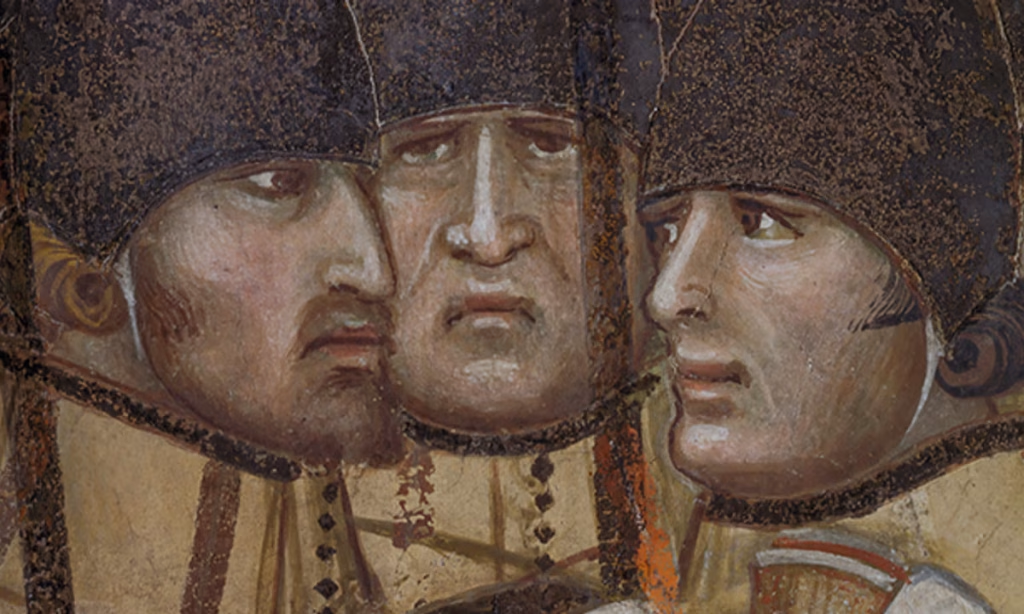Siena has recently enjoyed a renaissance in the public estimation. This year, the blockbuster exhibition Siena: The Rise of Painting 1300-1350 (at New York’s Metropolitan Museum of Art and London’s National Gallery) celebrated the enigmatic masters who flourished in Siena in the years leading up to the Black Death of 1348. Before that, the Libyan novelist Hisham Matar brought the city’s art to new audiences in A Month in Siena (2019), which occupies a magical space between art, history and personal memoir. It teased out the uniqueness of the Siena School, “neither Byzantine nor of the Renaissance, an anomaly between chapters, like the orchestra tuning its strings in the interval”.
While Matar’s book was a meditation on what it means to look at art, Jules Lubbock, a professor emeritus in the school of philosophy and art history at the University of Essex, has now pulled off a similarly satisfying feat: he has recreated the intricate, layered process by which a pre-modern masterpiece was formed. “We need to look … more and to read a little less,” he argues. “Deeper meanings are to be found within the images themselves and the way they are painted.” His subject is the six scenes in the fresco Good and Bad Government by Ambrogio Lorenzetti (1290-1348), at the time the largest non-religious painting created since antiquity.
In Siena’s heyday as a republican city-state, its artists produced the ultimate refinement of Gothic painting, never quite abandoning the conventions of their age but reworking them in their own sensibility. Tides of pulsating, embossed gold still washed over Madonnas enthroned in heaven but, in the hands of these highly individualistic painters, those Madonnas’ faces could begin to hint at the terrifying burden of divinity; the knowledge that comes with uncertainty; or the alienating pain of motherhood.
Sceptical and secular in outlook, Sienese artists liked to undermine expectations: they winked at ridiculous miracles; questioned the holiness of sanctified zealots; brought out the dust and sweat on weary, hardened Apostles. They did this in the infinitesimal latitude afforded in the margins of commissions and conventions. For them, truth lay in the artistic process; it was there in subtle variations of composition and technique, and in those ineffable sparks of psychological truth conveyed by a deflected glance, a wrinkled mouth or a flicked wrist. It was there in the huge, intricate pictorial scheme of the floor of the Siena Duomo, where the bored congregant could gaze, for example, at the “Massacre of the Innocents” lying at his feet, and see in the faces of Herod’s soldiers the half-remembered emptiness of violence.
A tale of two governments
And it was there, too, in the philosophical and intensely political murals that Lorenzetti painted between 1338 and 1339, within the Sala dei Nove; covering three sides of the room, he depicted a well-ordered city on the right—the “Good Government”—and one riven with strife, violence and venality on the left—the effects of “Bad Government”. At one end of the room, the figure of “Peace” is shown off centre and oddly disengaged. She may be one of the most reproduced images of Sienese art but, as Matar pointed out, the viewer is captivated by the face of Tyranny who presides over “Bad Government”: “an androgynous devil” who is “relentlessly fixed on his intention”.
The Sala dei Nove was the command centre of the nine bankers who ruled Siena in a rigid oligarchy for more than 60 years, generally considered a golden age; the National Gallery catalogue described Siena under “the Nine” as a “well-governed, morally righteous state”. Lubbock has a different view: it was “a highly repressive one-party state” and “a collective tyranny”. He argues that Lorenzetti’s murals for the Nine are far more ambiguous than supposed. Lorenzetti offered a subtle warning; he depicted the relationship between those ideals and the darker reality, emphasising their “mutability and precariousness”. He achieved that through his mastery of composition and form, and “the expressiveness of his handling of paint, his variations in facture, his use of colour as well as the symbolism of details”.
Lubbock cites a passage written by Lorenzetti’s contemporary, Giovanni Boccaccio, on the work of Dante Alighieri (1265-1321), whose poetry, for Boccaccio, was like a tree inside its bark; a great work of art, he wrote, would have “the most profound sensitivity as regards the hidden truth and an excellent and beautiful eloquence as regards the bark and visible leaves”. Lubbock shows us how to access those layers of meaning and an artist’s way of conveying them, “altering and enriching them in the process”.
- Jules Lubbock, Ambrogio Lorenzetti’s Good and Bad Government Reconsidered Paul Holberton Publishing, 184pp, 134 illustrations, £45/$60, published 28 January
